Last week, tensions between Israel and Iran escalated when Israel launched attacks on three key Iranian nuclear facilities, killing several scientists . The three sites, Natanz, Isfahan and Fordow, have a long history and are key to Iran's uranium enrichment program.
Natanz and Fordow are the main facilities serving the uranium enrichment process using modern gas centrifuge technology. Isfahan is responsible for the preparation of raw materials (uranium hexafluoride – UF₆).

Inside the uranium enrichment facility in Isfahan, 450km south of Tehran (Photo: Reuters).
Attacks on these facilities are aimed at slowing or disrupting the production of highly enriched uranium, which could turn Iran into a state capable of possessing an atomic bomb in short order.
What are the properties of uranium and why is it necessary to enrich uranium?
Uranium is a chemical element with the symbol U and atomic number 92, belonging to the actinide group of the periodic table. It is a slightly radioactive heavy metal that occurs naturally in ores in the Earth's crust, especially in placer, granite and sedimentary rocks.
In nature, uranium exists mainly in the form of uranium-238 (U-238), accounting for 99.27%, while uranium-235 accounts for only about 0.72%. However, only uranium-235 has the ability to generate energy for use in nuclear reactors, as well as to make atomic bombs.

Uranium in natural form (Photo: Wikipedia).
So we come to the concept of uranium enrichment. This process is basically removing the uranium-238 isotope to increase the uranium-235 ratio to the required level, which optimizes the energy production.
To do that, they use a centrifuge – a device that spins at very high speeds, up to 70,000 revolutions per minute – to exploit the very small difference in weight between U-238 and U-235.
When uranium is fed into a centrifuge in gas form, the heavier atoms (U-238) are pushed to the outside, while the lighter atoms (U-235) stay near the center, thereby gradually separating the U-235.
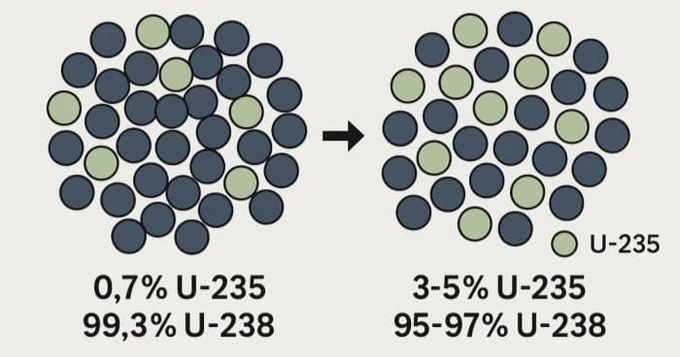
Density of U-235 isotopes (light blue) before and after uranium enrichment by centrifuge (Photo: Science).
This process is repeated thousands of times to achieve the required enrichment levels. Specifically, about 3–5% for nuclear power plant use, and about 90% for making nuclear weapons.
Because of this capability, uranium and especially the uranium enrichment process are closely monitored internationally, because the same technology can serve both peaceful and military purposes.
The possession of uranium enrichment technology by countries like Iran has always been a global concern because if they could raise the U-235 ratio high enough, they could create weapons of mass destruction in a short time.
From a technical perspective, uranium enrichment is an extremely sophisticated process, requiring complex infrastructure, precise controls and high costs. This is also what makes it a key boundary between energy (nuclear power development) and military ambitions (nuclear bombs).
Uranium enrichment levels

4 levels of uranium enrichment (Photo: centrusenergy).
Depending on the U-235 content, uranium can serve a variety of purposes. Specifically, at 3–5%, uranium is considered “low enriched” (LEU), which is sufficient for use in civilian nuclear power reactors to generate energy without the risk of proliferation.
At 20% or more, uranium is classified as “highly enriched” (HEU), which is weapons-grade. Nuclear weapons, in particular, require uranium enriched to 90% – a level known as “global weapons-grade.”
One worrying point is that enriching uranium from 60% to 90% is actually much easier than enriching it from 0.7% to 60%, because the amount of U-238 that needs to be removed is getting smaller. In other words, enriching uranium to weapons-grade is easier than enriching it in the first stage for use in a nuclear reactor.

The SILEX process involves separating the U-235 isotope using a laser. This technology could change the future of enrichment by using less space and energy (Photo: Science).
In addition to energy and weapons, uranium also has significant medical applications.
There, the U-235 isotope or highly enriched uranium can be used to produce molybdenum-99, a radioactive substance essential in diagnostic imaging and cancer treatment.
Thus, uranium can be seen as a highly dual-use material, serving both humanitarian and military potential, depending on how each country approaches this technology.
Under close supervision from international organizations
Because of this dual-use nature, uranium enrichment technology has become a primary concern in nuclear non-proliferation treaties.
The International Atomic Energy Agency (IAEA) plays a role in inspecting and supervising uranium enrichment activities in member countries, ensuring that the intended use is civilian and not converted to military use.
These obligations are clearly defined in the 1968 Nuclear Non-Proliferation Treaty (NPT). However, the reality of monitoring is much more complicated as countries such as Iran maintain partial cooperation with the IAEA while continuing to expand their enrichment capacity beyond the normal threshold.

Iran's key nuclear sites are being targeted by Israel (Photo: AP).
Once Iran reaches 60% enrichment – higher than any civilian purpose – many experts assess that the country could be “a bomb-making distance” in just weeks, if the political decision is made.
That is also the reason why enrichment facilities like Natanz, Fordow, Isfahan are frequently targeted not only in diplomacy but also in military strategy, as happened in the recent airstrikes.
Potential and strategic value of uranium
With the current development, uranium enrichment technology is moving towards breakthroughs. In particular, research using lasers (SILEX technology) can open up the possibility of enrichment that is much more precise and effective than centrifuges.
However, this also poses many new challenges in controlling and spreading the technology, because compact laser systems are much easier to hide than massive centrifuge facilities.
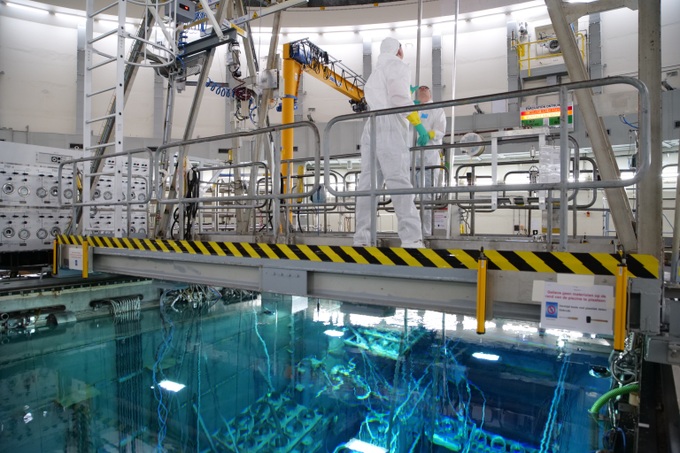
SCK CEN Nuclear Research Center in Mol, Antwerp Province, Belgium (Photo: Belganewsagency).
From an economic perspective, uranium enrichment is also increasingly commercially viable. Countries without enrichment technology often have to import LEU from other countries or from international enrichment centers – typically complexes in Russia, France, or Kazakhstan.
The global picture shows that, over time, uranium control is no longer simply a matter of security, but has become part of the long-term energy strategy of many countries.
As the world strives to transition to low-carbon energy sources, uranium – as the primary fuel for nuclear power – could become as crucial as oil or natural gas in the 21st century.
Source: https://dantri.com.vn/khoa-hoc/tai-sao-uranium-la-nut-that-trong-cac-cuoc-xung-dot-20250621175146509.htm









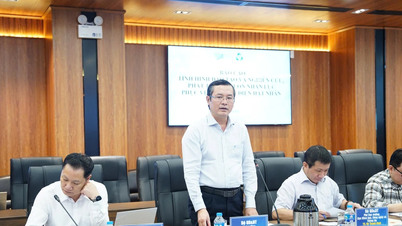



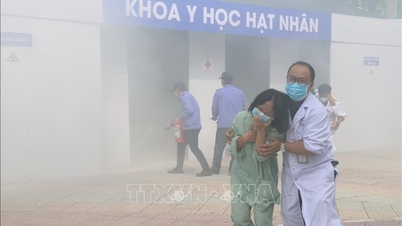

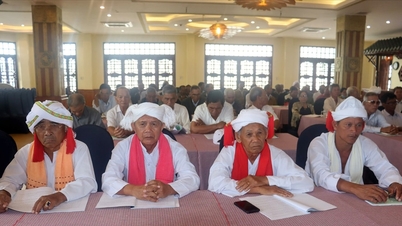

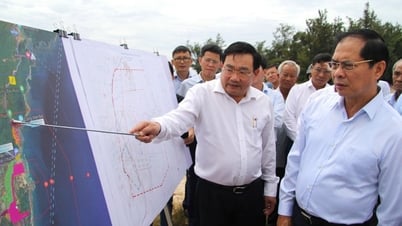






![[INFOGRAPHIC] Portrait of the newly inaugurated President of Cameroon at the age of 92](https://vphoto.vietnam.vn/thumb/402x226/vietnam/resource/IMAGE/2025/11/08/1762560057791_info-tongthong-cameroon-anh-thumb-jpg.webp)



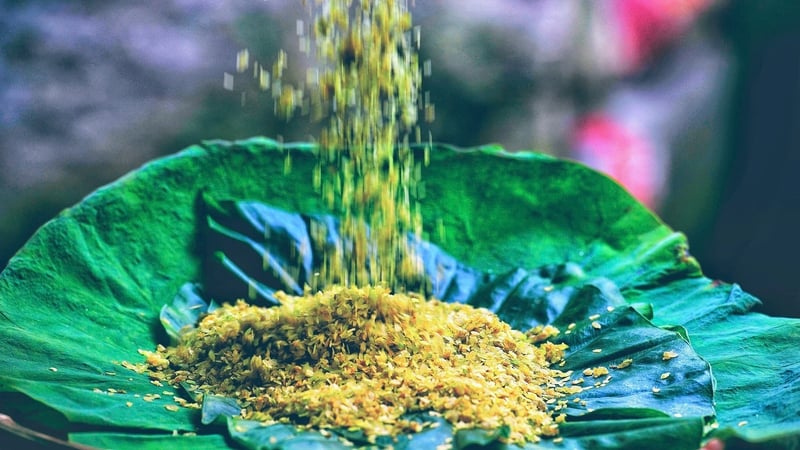










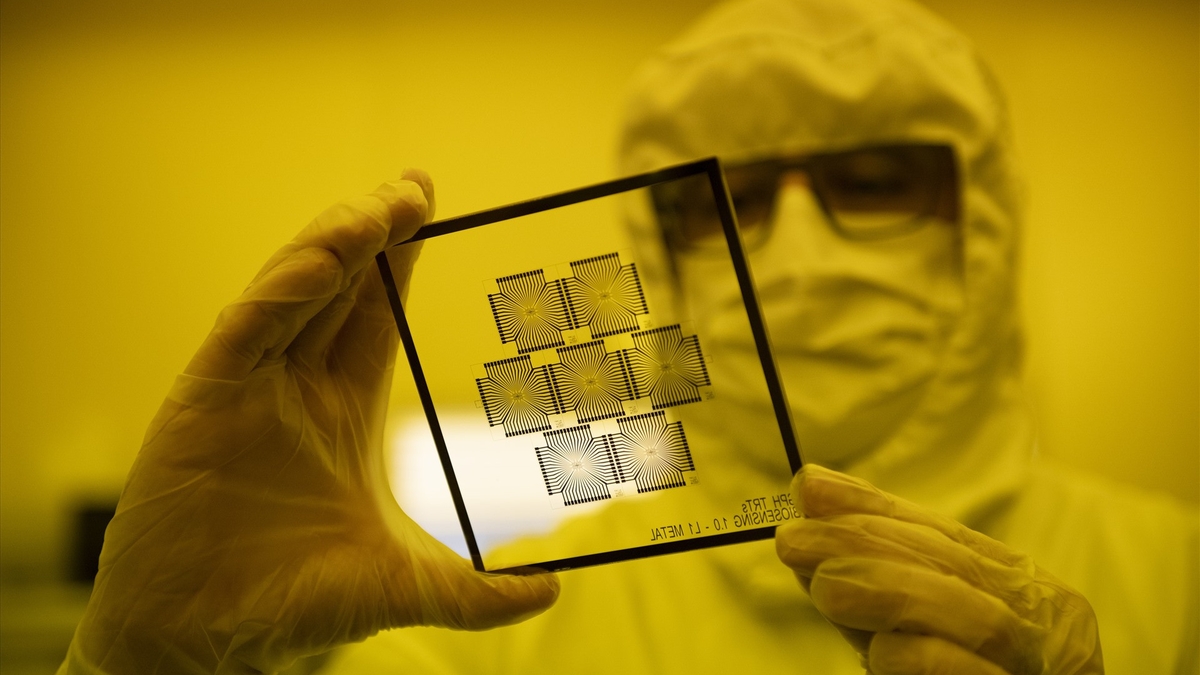

![[Video] Hue Monuments reopen to welcome visitors](https://vphoto.vietnam.vn/thumb/402x226/vietnam/resource/IMAGE/2025/11/05/1762301089171_dung01-05-43-09still013-jpg.webp)


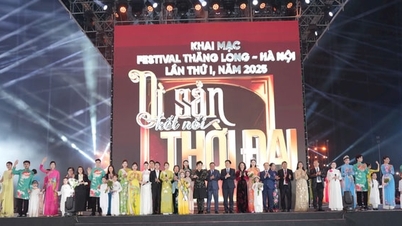



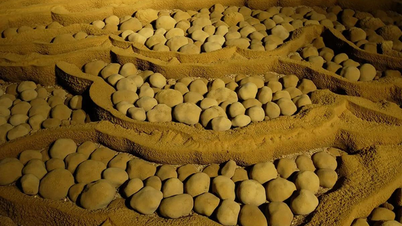


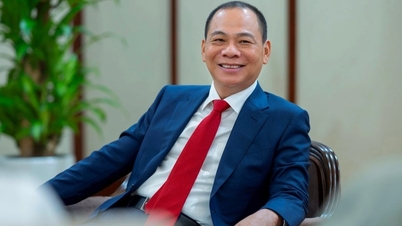










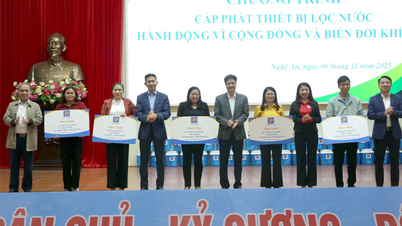


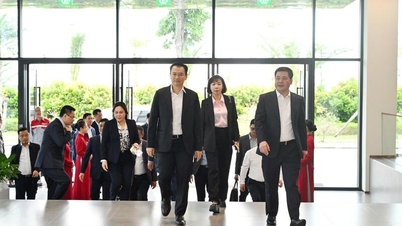
















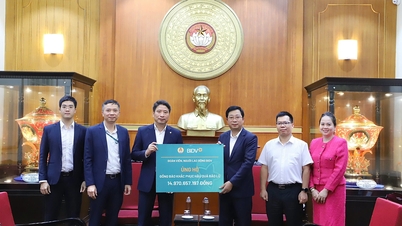

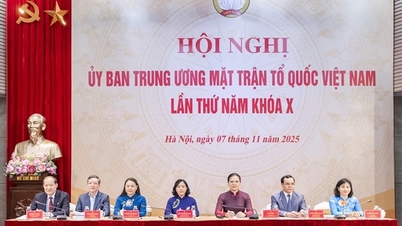
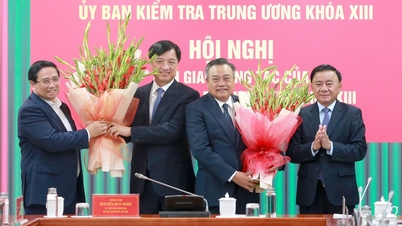








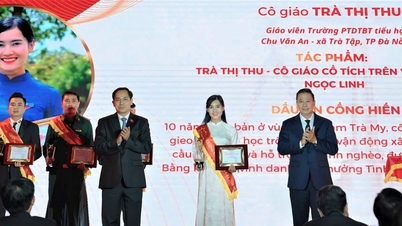















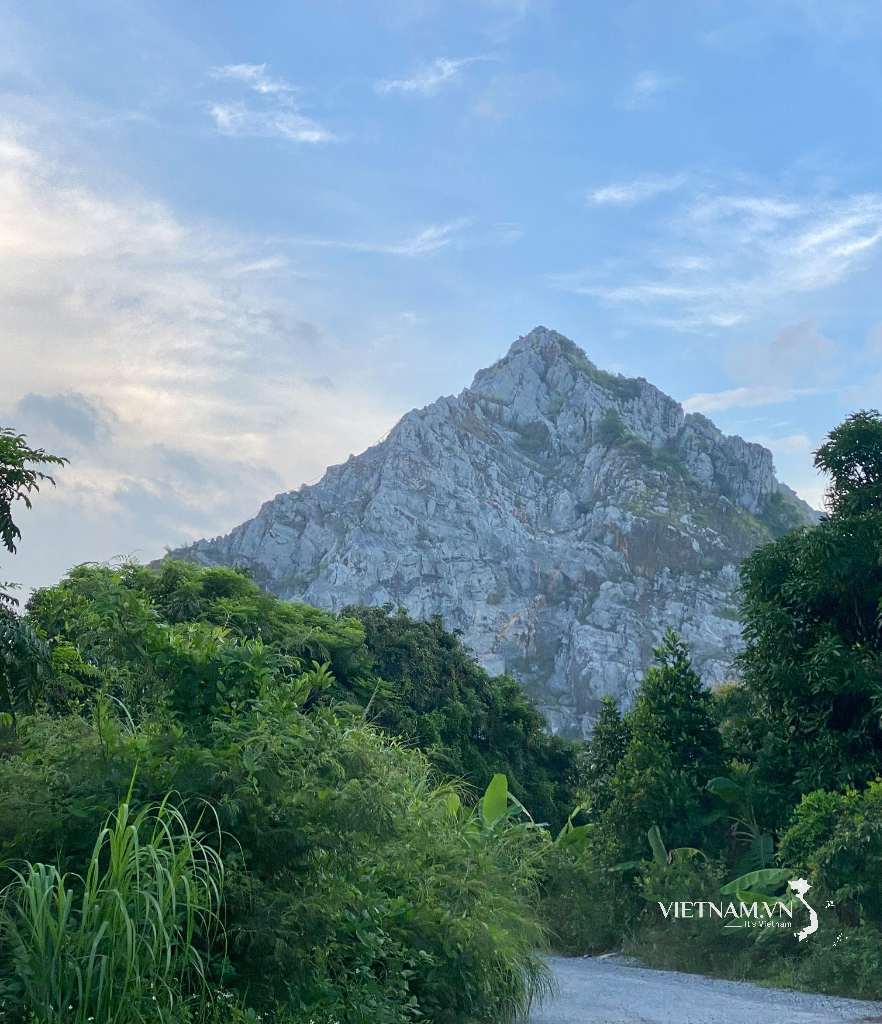
Comment (0)